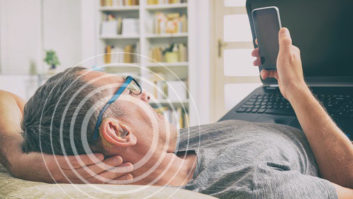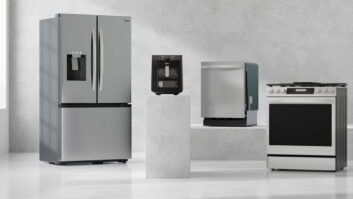
People are addicted to their smartphones. So much so, there is now a clinical term for the psychological attachment some people have to their devices: nomophobia, short for no-mobile-phone-phobia.
Nomophobia may not yet require medical attention, but the fear of phone separation is a growing trend that marketers, especially in retail, should be watching.
Now more than ever, smartphone owners and price-sensitive shoppers are using smartphones in store to price shop and make better informed buying decisions. In fact, 36 percent of U.S. smartphone users use devices in store to compare prices, according to one comScore study of 3,598 smartphone users.
But before we call for an intervention, let’s consider the impact of this “new normal” on retailers. Brick-and-mortar retailers are battling with technology as it takes customers out of stores and drives them online. But rather than throw in the towel, retailers of all sizes should instead embrace nomophobia as an opportunity to grow customer satisfaction and boost sales. Here’s how:
Enable Earlier Upgrade Cycles
Mobile-friendly programs can tie a customers’ love for smartphones with their love for shopping. For example, retailers can leverage in-store trade-in programs to accelerate a customer’s device upgrade timeline. Device trade-ins have become well known by consumers who are on the lookout for ways to upgrade to the latest and greatest for less. Well-timed trade-in promotions can help retailers cut through the clutter during new device launches, while increasing foot traffic from buyers looking for money-saving specials tied to new technology investments.
Retailers looking to motivate mobile-obsessed customers should embrace an online presence to amplify in-store promotions, and offer customers mobile promotions that can only be redeemed in store. Promoting in-store trade-in through digital channels ensures the trade-in messages reach consumers who are tied to their smartphones, then helps to drive them in store. By catering to consumers who want the latest and greatest devices, retailers are encouraging more spending and boosting foot traffic to stores.
Explore Mobile-Friendly Approaches
Smartphone users are seeking additional information and assistance in the buying process while in store. One comScore study of nearly 4,000 smartphone users also found that 27 percent of respondents read customer reviews while in the aisles of a store; 23 percent call, e-mail or text family and friends for feedback; and 22 percent read product details over their device.
For retailers, this means it is critical to develop a mobile-friendly version of their website. As a result of Google’s mobile friendly update earlier this year, creating a mobile-friendly site is more important than ever. Google’s new algorithm gives a ranking boost to sites and pages that are mobile friendly, pushing those sites further up in the results.
Becoming mobile friendly can also bring about the need for a mobile app. In fact, 55 percent of shoppers who responded to Cisco’s fifth annual retail survey said they will use a retailer’s app for or during shopping, and 34 percent claimed to use a third-party app for the same purpose. With a mobile app, retailers can effectively cater to customers’ needs for convenience and efficient shopping. Use an app for special offers, or money-saving coupons once customers walk in the store.
Retailers can also offer utility services that would otherwise need to be researched on a customer’s own time. Provide interactive store locating tools, information on store hours, customer service contact information and push notifications for special promotions or reminders around holidays.
With mobile-friendly websites and apps, retailers can deliver on a customer’s desire for easily accessible information in the palm of their hand – which can lead to higher customer satisfaction and loyalty.
Add Mobile Payment Options
With the emergence of smartwatches and new payment methods – particularly Apple Watch and Apple Pay – mobile addiction is at an all-time high. Within 72 hours of its launch, 1 million payment cards were activated on Apple Pay. With a mobile payment structure that is simple and secure, Apple Pay has created a new breed of shoppers seeking out retailers that accept this new form of payment. Retailers that don’t offer Apple Pay or another form of mobile payment like Google Wallet, risk losing shoppers.
Forrester Research projected the mobile in-person market, or people using phones to pay in-store, to be valued at $6.8 billion this year. This new form of payment is fast, easy and easily accessible, which means traditional retailers must find ways to work mobile payment into brick-and-mortar locations, or lose the ongoing battle to e-commerce.
Today’s consumers are more mobile obsessed than even before, making mobile shopping and targeting the new normal for retailers. Providing services such as trade-in that help customers upgrade for less; enabling mobile-friendly websites and apps; and embracing mobile payment options are all ways retailers can leverage this trend to boost customer satisfaction and drive higher sales.
Jeff Trachsel is chief marketing offficer of NextWorth Solutions, which has provided turnkey in-store and online CE trade-in platforms for major retailers nationwide since 2006. NextWorth says its combination of expertise, team and platform is fundamentally changing the way consumers buy, own and disown electronics.












